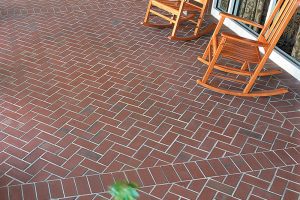All For Ivy?
Ivy growth on brickwork is a common sight, especially on older masonry structures. The combination of ivy and brickwork is often viewed as aesthetically pleasing, adding a touch of nature to the urban environment. However, while ivy can enhance the beauty of brickwork, it also has the potential to cause significant damage. This article examines both the benefits and disadvantages of allowing ivy to grow on brickwork and provides guidance on how to remove it if necessary.
Ivy: To Grow or Not to Grow?
The decision to allow ivy to grow on brickwork is not straightforward. Several factors must be considered to evaluate the desirability of ivy on brick masonry. A well-built brick wall made of quality materials can last for hundreds of years, but the presence of ivy may shorten its lifespan. Conversely, walls constructed with substandard materials and poor workmanship are more vulnerable to damage from ivy.
Disadvantages of Ivy
One of the primary disadvantages of ivy is that its tentacles and tendrils can dislodge mortar and masonry units over time. Additionally, the tendrils and plant growth may discolor the brickwork, detracting from its aesthetic appeal. Ivy can also trap moisture against the masonry, leading to efflorescence or staining. Moreover, ivy can become a haven for insects, birds, and other animals, providing them with easy access to the building’s interior. Finally, removing ivy can be challenging and may result in damage to the masonry.
Advantages of Ivy
Despite the potential drawbacks, ivy also offers some benefits. It can reduce wall temperature, potentially lowering summer cooling costs. Ivy sheds rainwater, which might reduce the amount of moisture contacting the wall. Additionally, many people find ivy-covered walls aesthetically pleasing.
Proper Maintenance of Ivy-Covered Walls
If you choose to allow ivy to grow on your brickwork, proper maintenance is crucial. Keep the vines trimmed and away from windows, gutters, eaves, woodwork, and other decorations to prevent damage and maintain the structure’s integrity.
Removal of Ivy
Before deciding to remove ivy, consider the following questions: What are the reasons for removing the ivy? Is the wall properly constructed of quality materials and good craftsmanship? What is the aesthetic and ecological value of the ivy on the wall?
If removal is deemed necessary, start by cutting away a small section of ivy in an inconspicuous area to assess the extent of rooting and the condition of the underlying brickwork. This small test will help you visualize the wall’s appearance after the ivy is removed and determine if repointing or other repairs will be necessary.
When removing ivy, carefully cut it close to the wall. Avoid pulling the vines away, as this can damage the brick or mortar. Leftover remnants, known as “suckers,” should not be removed with chemicals or acids due to the risk of damaging or staining the wall. Instead, allow the suckers to dry and turn dark, which typically takes two to three weeks. They can then be removed with a stiff fiber brush and some laundry detergent. Prompt removal is essential, as suckers that rot and oxidize may become nearly impossible to remove without damaging the wall surface.
Deciding whether to allow ivy to grow on your brickwork or to remove it requires careful consideration of both the advantages and disadvantages. While ivy can enhance the beauty and reduce the temperature of brick walls, it also poses risks of damage and discoloration. Proper maintenance and careful removal are essential to preserving the integrity of brick masonry.

